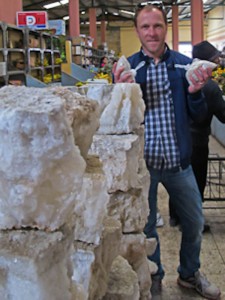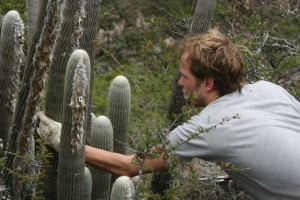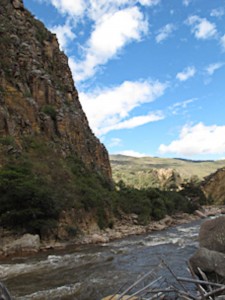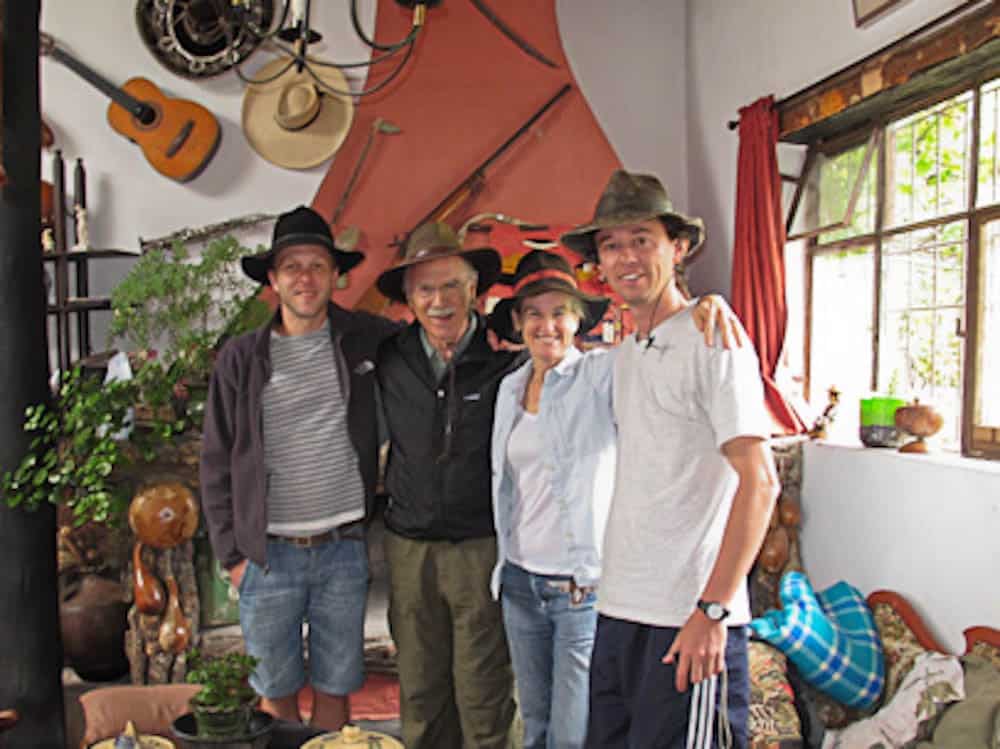Discovering a Passion for Bats: Internships at Kasanka National Park
Bats are among the most fascinating yet misunderstood creatures in the natural world, and for many conservationists, a single experience can ignite a lifelong passion
No man is worth his salt who is not ready at all times to risk his well-being, to risk his body, to risk his life, in a great cause–Theodore Roosevelt
To say we were overjoyed when Ralph arrived the day after we got stuck in the mud, is an understatement. And it’s not just because he had an SUV with 4-wheel drive. Everyone loves Ralph, especially yours truly. He works extremely hard, but likes to have fun at the same time. What a concept! So whenever he’s around, there’s lots of laughter. And the beautiful thing is: it’s contagious. He’s very considerate of others, and he never complains.
While looking for flowers with Nery, Ralph got a cactus spine in his knee, yet he continued his search till sundown. They brought the flowers back to the studio, worked with Merlin to create a set, helped with the photography and the bats till the wee hours of the morning. The next day, the cactus spine was still bothering Ralph. Nery volunteered his veterinarian surgical skills, and without anesthesia, took out a half-inch-long spine.
These guys had never met before, but they hit it off famously and worked so well together, hunting for flowers on crumbling cliff edges, through thorny thickets, sometimes in a rainstorm, returning always with beautiful flowers–and smiles.
Ralph recently completed his Ph.D. thesis on unique adaptations bat-dependent plants have evolved to help echolocating bats find their often highly specialized flowers. He and Merlin had agreed to collaborate in preparing an article for National Geographic (Read Blog #2 for the Back Story). Ralph had already made numerous ground-breaking discoveries, including that most flowers could be identified by their unique echo “fingerprints,” but together he and Merlin would learn much more through close observations and photography in Merlin’s portable photo studio.
 Old Man’s Beard or San Francisco cactus was the reason for our being in Ecuador. This cactus (Espostoa frutescens) is endemic to Ecuador, apparently found only in one arid valley in the whole world. Given its rarity and extremely rugged, often cliff-faced habitat, it is not surprising that it has been neglected by biologists. This plant formerly was found in a wider variety of terrain, but rapid expansion of agriculture appears to have destroyed its habitat in all but the most rugged areas on narrow canyon walls.
Old Man’s Beard or San Francisco cactus was the reason for our being in Ecuador. This cactus (Espostoa frutescens) is endemic to Ecuador, apparently found only in one arid valley in the whole world. Given its rarity and extremely rugged, often cliff-faced habitat, it is not surprising that it has been neglected by biologists. This plant formerly was found in a wider variety of terrain, but rapid expansion of agriculture appears to have destroyed its habitat in all but the most rugged areas on narrow canyon walls.
While conducting his thesis research, Ralph had noticed this plant’s production of furry, beard-like fibers behind its night-blooming flowers. Since many columnar cacti are highly reliant on bats for pollination, and because the flowers produced copious nectar and pollen and opened only at night, Ralph suspected they were bat-pollinated. When he measured echo reflectance, he became convinced that the beard-like fibers had evolved to absorb bat echolocation, resulting in a clearer image of the highly reflective flowers as bats approached.
Now we had come to a remote valley in the Andes Mountains of Ecuador to photographically document his suspicions despite the fact that no one had ever before seen a bat visit this plant. We didn’t even know for sure which bats they might be, and catching, taming and caring for the possible bat pollinators is a whole story in itself. Because we knew so little about our cactus, we nearly missed the flowering of our first, and at the time only, specimen. We had carefully watched our bud at sundown, and when it did not show signs of opening on the second night, we assumed we’d have to wait another night. Had we not stayed up to work with our two bats, we wouldn’t have noticed when it began to open at 11 o’clock. By 12:30 it was fully open, and we were setting up in hope of photographing bat visitation for the first time. High-speed flashes ready, the suspense was intense as we waited to see if our bats would visit in our dimly lit studio. Then to our horror, we noticed the flower was beginning to close, apparently mistaking our focusing lamp for sunrise. However, soon thereafter, our still timid bats approached and began to feed on the flower’s abundant nectar. Within minutes we had our first pictures, and by three the flower was closing. We’d learned our first important lesson—Don’t shine bright lights on these sensitive flowers if you want them to remain open. Initially, we had suspected that the flowering season was over, and had actually considered returning home empty-handed to wait for the next season.
We still do not know what triggers flowering. The shaman thought it was the full moon, some the timing of rains, but nearly everyone believed it to be seasonal, some in March and April, others in June, even in September and October. Ralph had found it flowering in both June and January. When we arrived, locals were predicting no more rain for at least a month, but to everyone’s surprise it began to rain almost daily, after the first week, and a few cacti resumed blooming. Ralph and Nery still had to spend long hours searching in extremely inhospitable terrain to find buds, but thanks to their determination and our very late nights in the studio, we were able to return home with close to 6,000 photos, providing the first documentation of Ralph’s bat pollinator hypothesis. For the complete story and photos, you’ll need to wait for the article in National Geographic.
Love our content? Support us by sharing it!
Bats are among the most fascinating yet misunderstood creatures in the natural world, and for many conservationists, a single experience can ignite a lifelong passion
Merlin and MTBC team members spent 19 days in Costa Rica last November on a filming trip for “Bat City” with its Director and Emmy
Bats can use sounds in many complex ways. They can sing and even have different dialects… When imagining a bat, the first thoughts that come
Thanks to all the Join the Nightlife: Bats and Agriculture attendees who joined us out in the field this year! Guests got hands-on experience with
2024 © Merlin Tuttle’s Bat Conservation. All rights reserved.
Madelline Mathis has a degree in environmental studies from Rollins College and a passion for wildlife conservation. She is an outstanding nature photographer who has worked extensively with Merlin and other MTBC staff studying and photographing bats in Mozambique, Cuba, Costa Rica, and Texas. Following college graduation, she was employed as an environmental specialist for the Florida Department of Environmental Protection. She subsequently founded the Florida chapter of the International DarkSky Association and currently serves on the board of DarkSky Texas. She also serves on the board of Houston Wilderness and was appointed to the Austin Water Resource Community Planning Task Force.
Michael Lazari Karapetian has over twenty years of investment management experience. He has a degree in business management, is a certified NBA agent, and gained early experience as a money manager for the Bank of America where he established model portfolios for high-net-worth clients. In 2003 he founded Lazari Capital Management, Inc. and Lazari Asset Management, Inc. He is President and CIO of both and manages over a half a billion in assets. In his personal time he champions philanthropic causes. He serves on the board of Moravian College and has a strong affinity for wildlife, both funding and volunteering on behalf of endangered species.